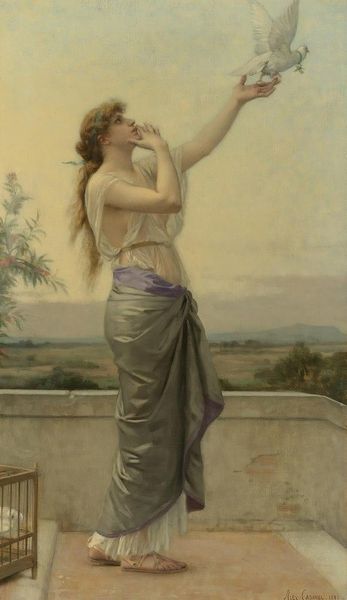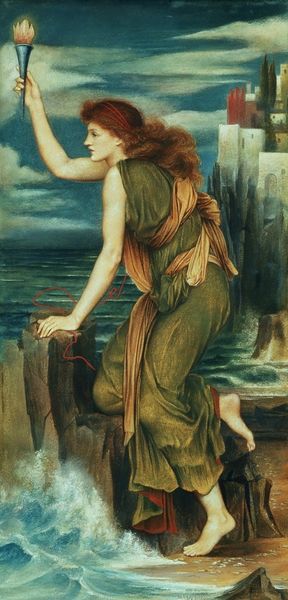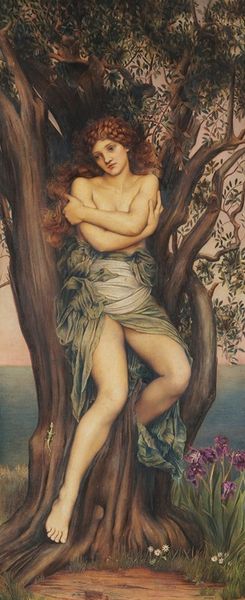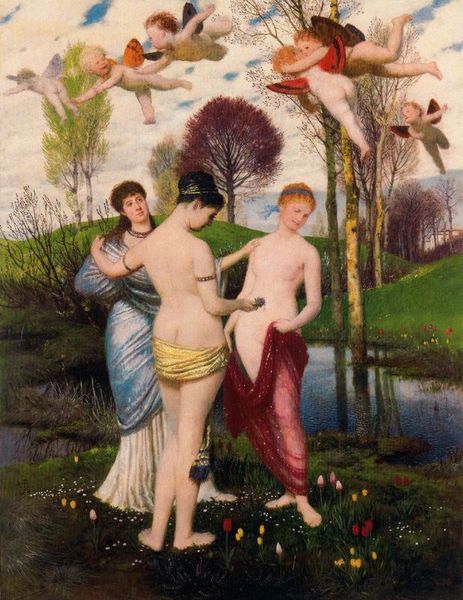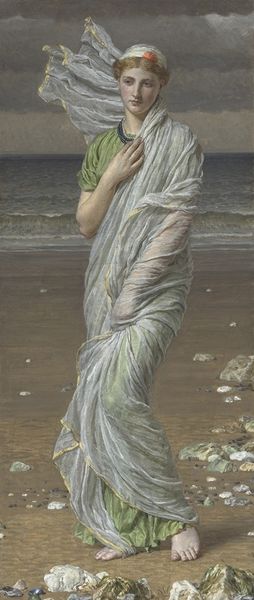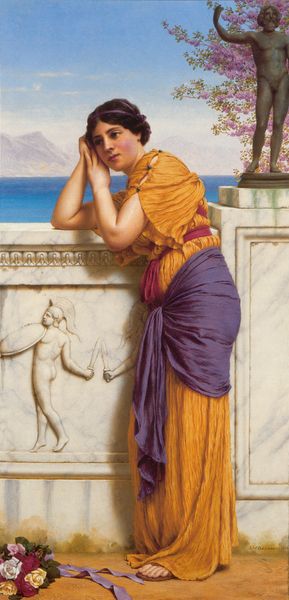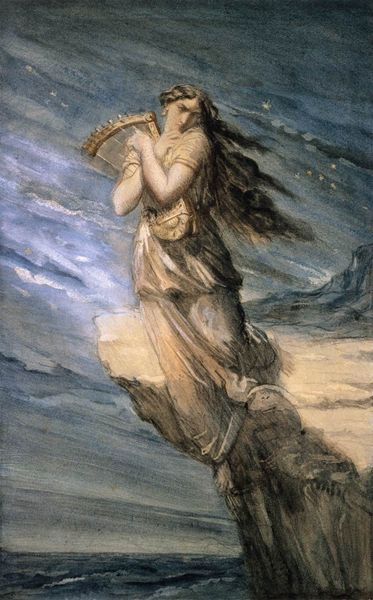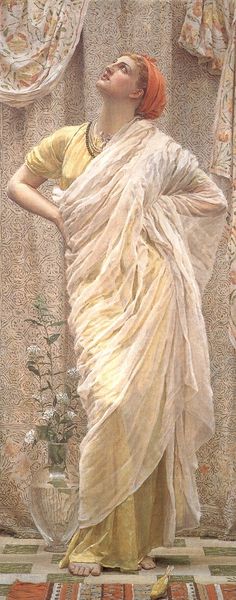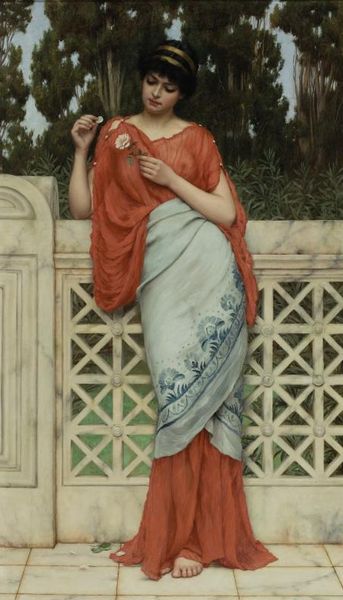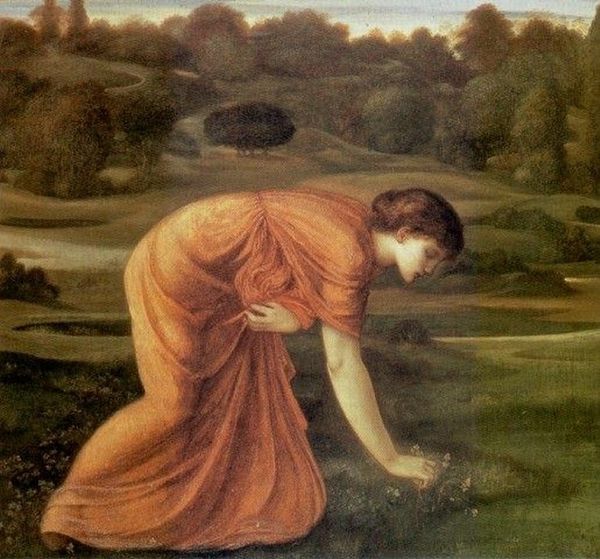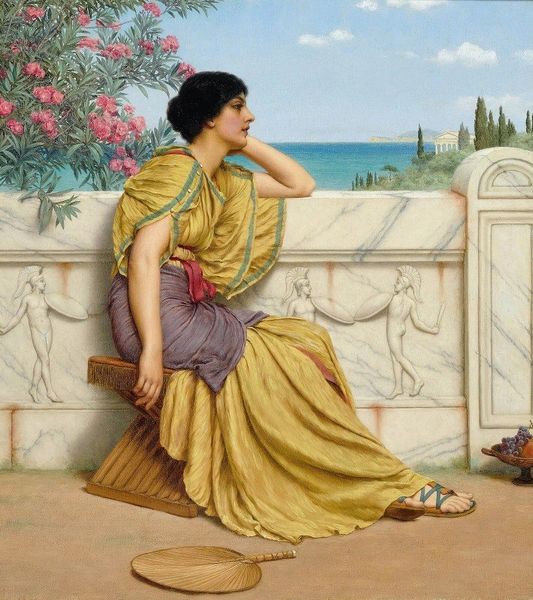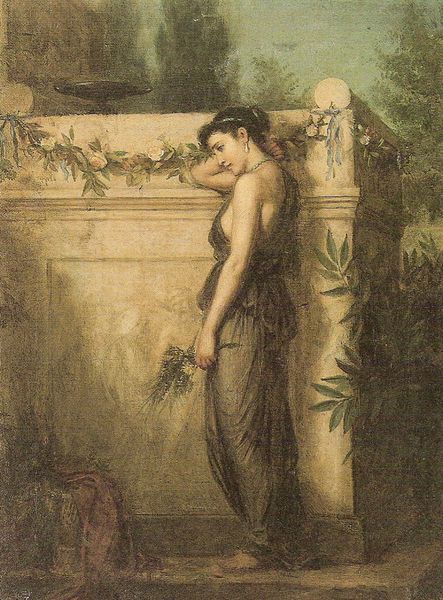
Copyright: Public domain
Editor: This is Evelyn De Morgan’s 1878 oil painting, "Deianira." She's such a striking figure. Her posture suggests grief or contemplation; I feel a sense of drama just from looking at her. What symbols do you notice in this artwork? Curator: The windswept drapery speaks volumes. It’s classical, yes, but the pre-Raphaelites were drawn to moments of heightened emotional intensity. Think of the symbolic weight of flowing garments: they represent transformation and being moved by forces beyond our control. She’s in motion, yet bowed; the weight of her narrative is palpable. Consider the landscape; does its calmness reflect or contrast her internal state? Editor: It's more contrasting than reflective. She appears tormented, but the scenery seems peaceful. Curator: Precisely. That disjunction enhances her isolation. Deianira, in mythology, is best known for her tragic role in the demise of Heracles, her husband. Can you sense premonition here? Is it an allegory about a woman being blown around by forces external to herself, such as an unwanted suitor, as with the story of Heracles? Or about a woman being the author of her own downfall? Editor: The artist clearly captured her vulnerability and anguish so powerfully. I hadn’t picked up on that reading, seeing only sadness, not yet linking it to a story with that depth of meaning. Curator: Seeing her fragility does elicit a sense of pathos for her fate and brings her into human terms, beyond being a tragic player in myth. Considering those complexities adds another layer of understanding, don't you think? Editor: I absolutely agree. It's far more than a historical painting; De Morgan's "Deianira" encapsulates universal feelings of regret and uncertainty. Curator: Precisely. That's the enduring power of a strong symbol well deployed.
Comments
No comments
Be the first to comment and join the conversation on the ultimate creative platform.
